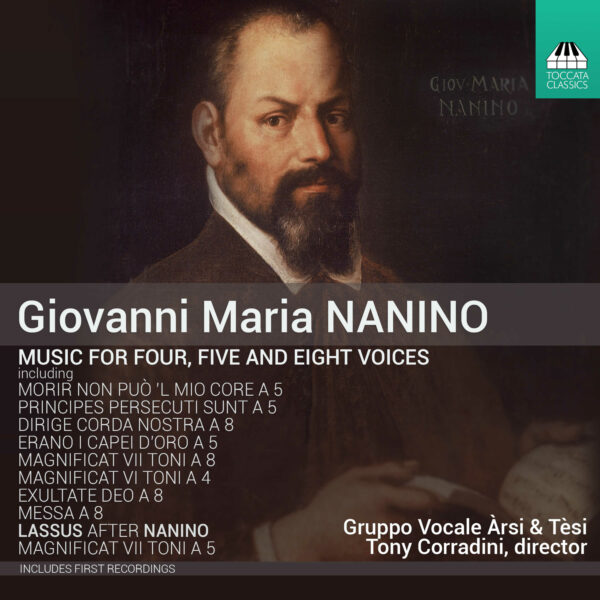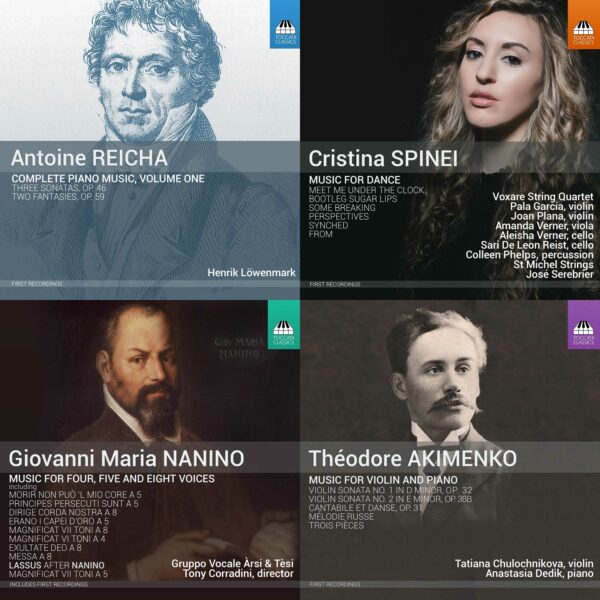Giovanni Maria Nanino: Music for Four, Five and Eight Voices
Giovanni Maria Nanino (1544–1607) was one of the major Italian composers of late-Renaissance polyphony. A successor of Palestrina as maestro di cappella at Santa Maria Maggiore in Rome, Nanino produced a modest but expertly crafted body of sacred music, and his madrigals, too, enjoyed widespread popularity. He also became the most influential teacher of composition in late-sixteenth-century Rome. But despite the prestige he enjoyed in his own day, his music has been almost entirely forgotten. This recording – the first to be dedicated to his music – reveals it to have struck a remarkable balance between beauty, passion and dignity, between darkness and light.
Gruppo Vocale Àrsi & Tèsi
Tony Corradini, director
Listen To This Recording:
-
Mass for Eight Voices
- I Kyrie
- II Gloria
- III Credo
- IV Sanctus/Benedictus
- V Agnus Dei
- Magnificat VII toni a 8
- Erano i capei d’oro a 5
- Principes persecuti sunt after Erano i capei d’oro a 5
- Morir non puo ’l mio core a 5
- Laetamini in Domino after Morir non puo a 5
- Dirige corda nostra after Donne vaghe e leggiadre a 8
- Magnificat VI toni (Bibl. Casanat. 4436) a 4
- Haec dies (Collectio major ex Bibliotheca Altempsiana) a 5
- Exultate Deo a 8
- Magnificat VII toni after Erano i capei d’oro a 5
LASSUS after NANINO


Johan van Veen :
‘…one of the authors of the liner-notes to the present disc, Maurizio Pastori, has made special study of this composer, who was highly appreciated in his time. … Moreover, the programme ends with a setting of the Magnificat by Orlandus Lassus which is based on material from Nanino’s madrigal Erano i capei d’oro, another token of his being appreciated by more famous contemporaries. … It is the first entirely devoted to Nanino and all but two of the pieces in the programme are recorded here for the first time. Lovers of renaissance music should definitely investigate it.’
—Johan van Veen, Music Web International